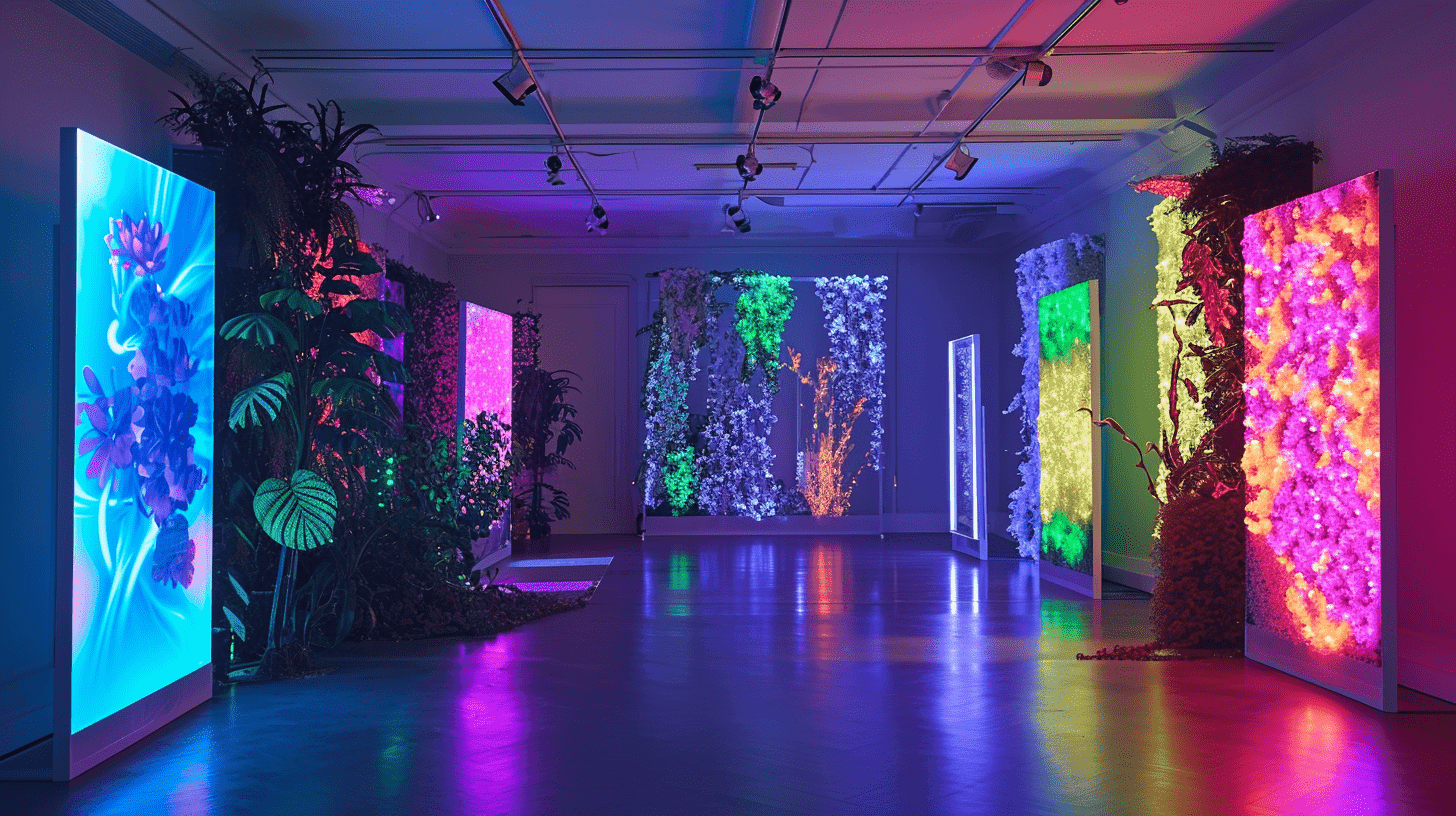Til baka
Building a Memory Palace: An Effective Method to Boost Memory

Introduction
The concept of a Memory Palace, also known as the method of loci, is not just a mnemonic device but a transformative technique that has stood the test of time, dating back to ancient Greek and Roman rhetoricians. This powerful method leverages our innate ability to remember spatial information to enhance our capacity to remember virtually anything else. By creating a mental blueprint of a familiar place and populating it with vivid, sensory-laden images representing the information we wish to remember, we can significantly improve our recall abilities. This technique is not just for memory athletes or scholars; it's a universally accessible tool that can provide a substantial boost to anyone's memory, enhancing both personal and professional aspects of life. In an era where digital tools like smartphones have taken over many of our cognitive tasks, learning to build a Memory Palace serves as a robust method to reclaim and enhance our natural memory capabilities.
The Science Behind the Memory Palace
At its core, the Memory Palace technique is grounded in the brain's exceptional ability to recall spatial and visual information. Humans have evolved to navigate complex environments, remembering locations and spatial relationships with remarkable accuracy. When we attach abstract information to these vivid spatial memories, we create a mental hook for that information, making it more retrievable. Neuroscientific research supports this, showing that navigating and remembering physical spaces engage various parts of the brain, including the hippocampus, a region crucial for memory formation. By associating non-spatial information with locations in a Memory Palace, we're effectively piggybacking on this powerful spatial memory system, allowing us to recall lists, facts, names, and much more with greater ease and accuracy. This method leverages the brain's associative nature, connecting new information with well-known spatial contexts, thus enhancing recall through a process known as elaborative encoding. The Memory Palace not only aids in memory but also engages the brain in a healthy, stimulating exercise, potentially offering long-term cognitive benefits and reducing the risk of memory-related decline.
Step-by-Step Guide to Creating Your Memory Palace
Creating a Memory Palace is a potent method to enhance memory recall by leveraging the brain's innate ability to remember spatial and visual information. To start building your Memory Palace, select a place that is very familiar to you—this could be your home, workplace, or a regular walking route. The key is to have a clear and detailed mental image of the space.
- Choose Your Location: Start with a location you know well and can visualize clearly. It could be your childhood home, your current living space, or even a favorite vacation spot.
- Define a Route: Within this location, define a clear route that you can walk through mentally. This route should be logical and easy to follow, like the path you take to move through your house.
- Identify Specific Spots: Along your route, identify specific spots that will serve as "pegs" for the information you want to remember. These could be objects within a room or landmarks along a path.
- Associate Information: Attach each item you want to remember to a specific spot in your Memory Palace. The association should be vivid and detailed. For example, if you need to remember a grocery list, imagine placing each item in different locations along your route.
By walking through your Memory Palace mentally and revisiting each location, you can recall the associated items in order, enhancing your memory of them.
Tips for Effective Memory Palace Construction
To maximize the effectiveness of your Memory Palace, it's crucial to use vivid, unique images that evoke strong emotional or sensory responses. The more unusual and striking the image, the more likely it is to stick in your memory.
- Use Vivid Imagery: If you need to remember a piece of information, transform it into an image that is vivid, colorful, and dynamic. For example, if you're trying to remember a concept like "freedom," you might visualize a soaring eagle with a banner that reads "freedom" in its talons.
- Embrace the Unusual: The more bizarre or unique the image, the more memorable it will be. If you need to remember to buy milk, imagine a cow dancing in your living room.
- Maintain Order: Ensure that the sequence of locations in your Memory Palace follows a logical order. This sequential pathway will help guide your memory recall from one piece of information to the next.
- Practice Regularly: Like any skill, the effectiveness of the Memory Palace technique improves with practice. Regularly visiting and updating your Memory Palace can strengthen your memory and enhance the durability of the stored information.
By incorporating these tips into the construction of your Memory Palace, you can create a powerful and personalized tool to enhance your memory and recall abilities.
Utilizing Pyrilia to Enhance Your Memory Palace Technique
Pyrilia can be an invaluable companion in your journey to mastering the Memory Palace technique. By leveraging its organized storage feature, you can systematically catalog the elements of your Memory Palace, ensuring that each memory has a distinct and easily accessible location. This can be particularly useful when constructing complex or multiple Memory Palaces, as Pyrilia can help keep track of the associations you've made, preventing overlap and confusion.
Furthermore, Pyrilia's replay feature allows you to revisit and reinforce the memories stored within your palace. By regularly reviewing the details of your Memory Palace in Pyrilia, you can strengthen the neural pathways associated with these memories, improving recall speed and accuracy. This feature is especially beneficial for long-term memory retention, as it enables you to periodically refresh your memory and prevent decay over time.
Common Challenges and How to Overcome Them
While the Memory Palace is a powerful mnemonic device, individuals may encounter challenges in visualizing and maintaining their palaces. One common issue is difficulty in creating vivid and detailed mental images. To overcome this, practice with simple, everyday objects and scenarios to hone your visualization skills. Gradually progress to more complex or abstract items as your ability improves.
Maintaining the Memory Palace over time is another challenge, especially as you add more information or create multiple palaces. To keep your Memory Palace fresh and effective, schedule regular review sessions to walk through and update your palace. This can involve adding new memories, adjusting existing associations, or simply reinforcing the connections you've already established.
Additionally, if you find yourself forgetting parts of your Memory Palace or the information associated with it, revisit the foundational principles of the technique. Ensure that your locations are distinct and memorable, your images are vivid and unique, and your route through the palace is logical and sequential. With practice and perseverance, you can refine your Memory Palace technique, making it a reliable tool for memory enhancement.
Advanced Techniques and Variations
Once you become comfortable with constructing a basic Memory Palace, you can explore advanced techniques and variations to enhance and expand its capacity. One method is to create multiple Memory Palaces, each dedicated to different types of information or subjects. This can prevent confusion and create a more organized mental library of information. For instance, you might have one Memory Palace for historical dates, another for vocabulary words, and yet another for presentation content.
Another advanced technique is to layer additional mnemonic devices within your Memory Palace. For example, you could use the peg system, where you associate each item you want to remember with a numbered peg, and place these pegs within your Memory Palace. This can be particularly useful for remembering ordered or sequential information.
Additionally, you can expand your Memory Palace by adding more loci (locations) or by creating more elaborate and detailed associations. The more vivid and complex your associations are, the more they will stand out in your memory. Remember, the limit is your own creativity and the effort you're willing to put in to maintain and expand your palaces.
Real-World Applications of the Memory Palace
The Memory Palace technique has a wide range of applications in real life, from academic learning to professional development and personal self-improvement. Students can use Memory Palaces to remember complex information for exams, such as scientific terms, historical dates, or language vocabulary. Professionals can use the technique to memorize speeches, presentation content, or important data for meetings and negotiations.
In daily life, the Memory Palace can help with remembering lists, like grocery items or to-do tasks, and for learning new skills or hobbies. It's a tool that can enhance lifelong learning and cognitive agility, beneficial in an era where knowledge and information are key to personal and professional success.
Many successful individuals have used Memory Palaces to achieve remarkable feats of memory. For instance, memory champions often use this technique to remember hundreds of random words, numbers, or even decks of cards. This demonstrates not only the potential of the Memory Palace technique but also the incredible capabilities of the human brain when trained and utilized effectively.
Conclusion
The Memory Palace is a time-tested mnemonic technique that offers a dynamic way to enhance memory recall and cognitive capabilities. By leveraging our brain's natural spatial and visual memory skills, the Memory Palace allows us to store and retrieve vast amounts of information efficiently. Whether you're a student aiming to excel in your studies, a professional looking to sharpen your presentation skills, or simply someone interested in improving your everyday memory, the Memory Palace can provide a structured and effective framework for memory enhancement.
We encourage you to embark on the journey of building your own Memory Palace, using the strategies and insights provided in this post. Remember, like any skill, constructing a Memory Palace requires practice and patience. Start small, experiment with different techniques, and gradually expand your palace as you become more comfortable with the method.
Pyrilia can be a valuable ally in this endeavor, offering organized storage and replay features that can assist you in cataloging and reinforcing the memories within your palace. By integrating Pyrilia with your Memory Palace practice, you can enhance the effectiveness of this technique and achieve a more organized and accessible mental repository of information.
Embrace the art of memory with the Memory Palace technique and discover how it can transform your ability to remember, learn, and engage with the world around you. With dedication and the right tools, you can unlock the full potential of your memory and open up new horizons of cognitive achievement.
Ef þú líkar við póstinn, gætir þú hugsað um að taka þátt í Pyrilia.
Pyrilia er fullkomin staður til að geyma hugmyndir, minningar og meginhyggjur.
Skelfa daglegar hugsanir, leggja áherslu á merkileg reynslu og endurræsa þær með einstakri endurspilunarstöðu okkar. Umföngum ferð með auknu minni og sjálfsátökum. Saga þín, fallega varðveitt.
Prófaðu það

Kannaðu aðra pósta:




